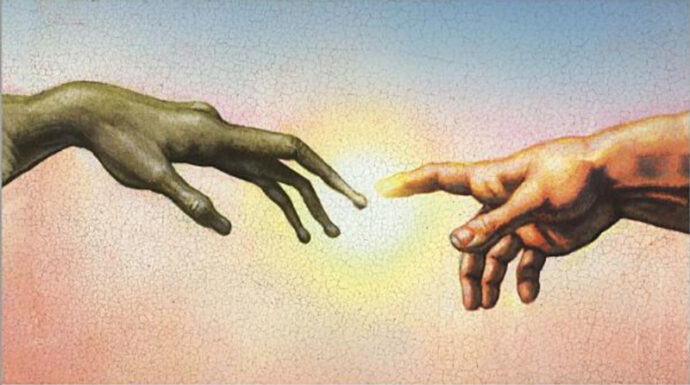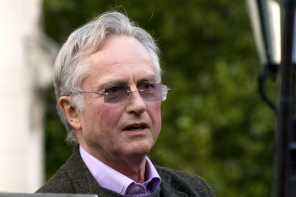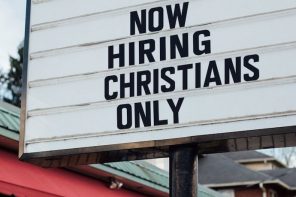In his new book, Would You Baptise an Extraterrestrial?, the Jesuit astronomer Guy Consolmagno suggests we should think of the Big Bang the way we think of Picasso. It’s an accurate enough model, he says; but like all the theories that came before it, its value is to give us a better glimpse of something beyond our comprehension.
Consolmagno, 62, is a public ambassador for the Vatican’s hard-science division. He lectures at planetariums and universities, and in addition to his academic articles, he’s written several other books on astronomy and its relationship to Christianity, including the excellent 2000 memoir Brother Astronomer. His newest title, released in October and co-authored with his fellow Jesuit Paul Mueller, is sometimes startlingly profound, despite its colloquial tone. Last month he also received the prestigious Carl Sagan Medal, given each year to a scientist who helps educate the public on planetary science.
Not many living scientists are immersed so deeply in contemplative religion, nor are there many contemplatives responsible for such scientific feats. It makes him a unique authority on the relationship between the two.
But outside the academy he still remains a curiosity. In TV and radio appearances he’s frequently called on to discuss an old subject: How does he reconcile his faith with science?
“It’s a question that never actually arises in our lives—ever,” he said during a recent interview with Religion Dispatches. “It’s sort of like asking, ‘How do you reconcile being a scientist and a Detroit Lions fan?’”
The question seems to assume a fundamentalist model of religion, rather than a mystical one, and takes for granted that the two disciplines are separate in the first place. Instead, Consolmagno says he’s had revelations behind his telescopes that resemble his experiences in Mass. His faith permeates his scientific research, and his research deepens his faith.
Consolmagno is amiable but something of loner—which is almost a prerequisite for his lifestyle, and not only because he’s taken a vow of celibacy. He divides most of his time between traveling alone, mainly for fundraising ventures, and working in labs at the University of Arizona and in Rome. Though he’s neither a monk nor a priest, as a Jesuit he is required to spend an hour each day in prayer and to attend daily Mass.
Consolmagno grew up in a Detroit suburb and attended a Jesuit high school, where he focused on classical studies; he credits poetry lessons for teaching him how to parse stellar data. Later, he studied planetary science at the Massachusetts Institute of Technology and earned a PhD at the University of Arizona. After a stint of teaching at Harvard, he went to Kenya on an assignment for the Peace Corps, which convinced him that he wanted to put his work in the service of his values, instead of just his income. He didn’t particularly care about marrying. As he explains in Brother Astronomer, he felt a strong sense one day while praying that it was time he joined the Jesuits, whose avowed mission is to “find God in all things.”
After signing on in 1989, the order assigned him to study philosophy and theology at Loyola University Chicago, where he confronted theories of science for the first time. He found resonance in the historical realism school, which acknowledges the sociological factors in scientific research but still holds that science has “some validity” in describing reality.
The books he’s written since do not call for a radical new synthesis between science and religion, but rather something close to a medieval perspective. Catholic scholars were responsible for the vast majority of western scientific progress throughout the Middle Ages, and by one line of argument, their methodological advances made modern science possible. As for the Church’s persecution of Galileo, Consolmagno doesn’t downplay its guilt, but he attributes its actions more to politics than a deep-seated fear of science.
Even in the last two centuries, he writes, the Catholic Church has made major scientific contributions. Pietro Angelo Secchi—another a Jesuit who studied astronomy for the Vatican—discovered the principle of stellar classification in the 1860s and ’70s, and Georges Lemaitre, a Belgian priest, originally proposed the Big Bang theory in 1931.
But in a way, Consolmagno has the science/religion debate to thank for his own livelihood. When the Vatican established its observatory in 1891, it did so expressly to demonstrate its support for scientific progress. It chose astronomy, he said, because it’s such a “pure” science, unlikely to be dragged into market competition (compared to, say, the development of new drugs) or be used to harm anyone.
“Not until we invent black holes that can execute people,” Consolmagno added drily. “Which I don’t think will happen anytime soon.”
The observatory now has 15 other Jesuits who work alongside him, divided between Arizona and Rome. Consolmagno says Church leaders don’t direct his research in the slightest; they just want him to raise their academic credibility by “doing good science.” Lately he’s been parsing asteroid data collected by NASA’s Dawn spacecraft, working toward a controversial thesis that the early solar system was far more “violent” than most astronomers believe.
In his experience, those who imagine a conflict between science and religion usually take a reductive view of both. “They think religion is a book full of things, and science is a book full of things,” he told RD. “And what happens if the things in one contradict the things in the other?” The trouble, he suggests, is that many people stop paying attention to science or religion lessons after age 10.
A more sophisticated version, affirmed by such figures as Neil deGrasse Tyson and Richard Dawkins, says that science calls for relentless skepticism, whereas religion requires belief in the untestable, if not the impossible. But to Consolmagno, it’s a false dichotomy. He cites two basic objections: first, that both science and religion are modes of inquiry, involving elements of faith; and second, that each one uses metaphor to approach subjects beyond the limits of comprehension.
Religious belief doesn’t start with blind belief, he says in Brother Astronomer, it begins with experience. In his case it’s a sense, at the most basic level of perception, of divine presence. Given that his own experience closely resembles those of other people in different times, places, and cultures, he writes, “Occam’s Razor … cuts pretty clean here.” He repeats an analogy not uncommon in mystical literature: it’s like hearing music and knowing it’s more than just noise. “Faith,” he says, “is our reaction to that experience.”
In the same way, he argues, science doesn’t begin with logic. It begins with insight, and it uses logic to “support the intuition after the leap of insight has occurred”—or to scrutinize insights and discard or refine them. This is the form that skepticism takes: questioning your explanations and models, but believing there’s a concrete reality beyond them.
It seems fair to say that believers and nonbelievers start with different axioms. Some of us are inclined toward belief; others are not.
His other contention is that science, like so many religious writings, depends on evocative language. Here his Picasso analogy is useful. The Big Bang helps us understand the universe’s origins in a brilliant and unique way, he says; but it hardly tells us everything, and more “scientific paintings” will no doubt follow it in the coming centuries. Even mathematics, that bedrock of physics, he considers an elaborate system of metaphors for describing the natural world.
This harmonizes with the Christian tradition of negative theology. For mystics at least as early as the fourth century, saying “God is love” isn’t exactly false, but it’s certainly inadequate. It’s a gesture toward something incomprehensible. It’s equally true to say God is not love. Consolmagno likes to say that science consists of synthetic things we can understand, but they only approximate the truth; religion consists of truth we don’t understand.
This perspective makes science a form of prayer, even for the atheist. If God created the universe and imbues it with divine presence, then exploring the universe is a movement toward God. Consolmagno stresses in Brother Astronomer that science doesn’t give rise to his faith, but he says it does enrich it: “I see the pattern of Creation unfolding, over and over … complexity from the simplest of rules, beauty from the surprising interplay of basic forces … I begin to get a closer appreciation of the personality of the creator.”
Meanwhile, his faith orders the direction of his science. He pities certain colleagues in disciplines like biology and chemistry, who worry their findings will be used toward nefarious ends, or who feel pressure to shave their data. His position with the Vatican shields him from such concerns. With his vow of poverty, his work will never make him rich; and with his vow of obedience, he can’t hope for much fame or glory. He can always be reassigned if his ego swells up.
It helps to reflect on the turnover of scientific theories. He could always be wrong. “There is a certain value, as St. Ignatius says, in preferring scorn to praise,” he told RD. “That sense of humility—you’re better off when people hate you. I’m not there yet. But I get what he’s talking about.”





